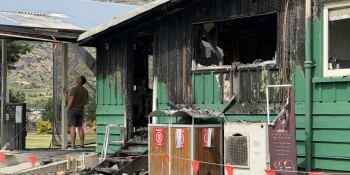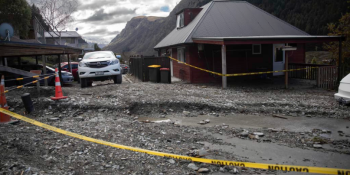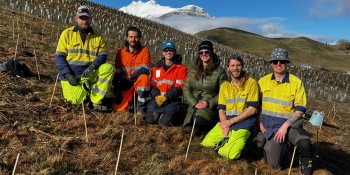Mayor refuses to defend his election claims - gets QLDC staff to do the job
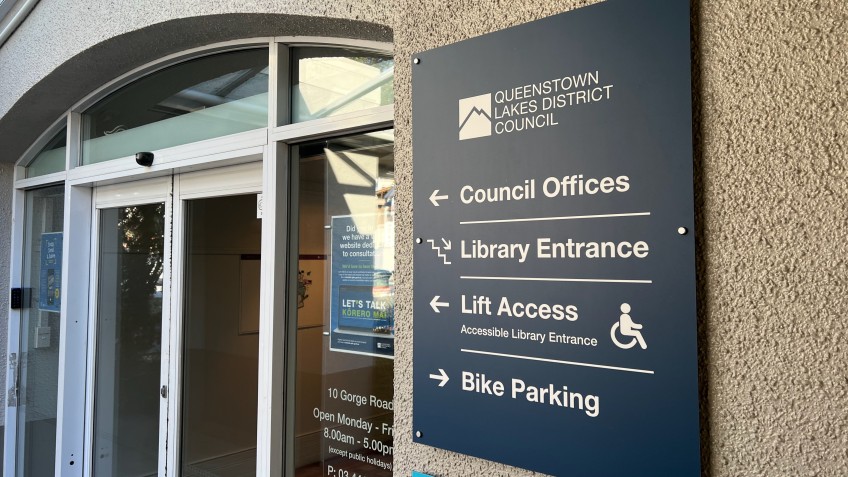
A Crux reader has produced a detailed piece of research that challenges council finance claims made in the Crux election debate by Mayor Glyn Lewers.
But Mayor Lewers has relied on QLDC staff to answer his election claims and refused to make any comment to Crux.
During the recent Crux-hosted mayoral debate incumbent Glyn Lewers was asked to address the issue of council spending and its secretive nature.
QLDC rates revenue has doubled in the last decade. But this increasing rates income is being spent on a large increase in staff numbers, external contractors and rising council debt.
During the debate, he said 90 per cent of the Queenstown Lakes District Council’s capital works programme was spent on Three Waters, transport and solid waste, 85 per cent of the operating budget was building and resource consents, Three Waters, solid waste and transport.
“We’ve only got 15 per cent on the good stuff. If you want to dice it another way, 50 per cent of the rates you’re paying at the moment is lifting funded depreciation and interest costs. Staff costs are only 18 per cent of our costs.”
With 671 staff (447 FTE), council employee numbers are high in relation to the population. But Lewers argued the council was doing the work of bigger cities yet with half the staff.
“Our activity levels are on the level of Tauranga, Hamilton, Auckland and Christchurch but we do it with half the staff and also those cities I've named don’t have this large expanse land area and two alpine villages that are growing at a phenomenal rate.”
The debate prompted one Crux reader to crunch the numbers, to detail the council’s long-term financial performance baed on the council's own published financial statements.
The reader, who wanted to remain anonymous, looked at QLDC's audited financial statements for the last 10 years.
Some of their key findings were:
- Rates revenue more than doubled in the last decade, from $55.4 million in the 2014 financial year to $123m in 2024. Some of this could be attributed to population growth, with the district population increasing from an estimated 31,300 to 52,900 in that time.
- The number of employees at the council increased from 262 as of 30 June 2014, to 671 as of 30 June 2024 - a 9.9% cumulative average growth rate.
- Employee expenses (excluding contractors) were $16m in FY14, growing to $48.5m in FY24 – a threefold increase and 11.7 per cent compounded average growth rate per year.
- Contractor expenses from FY17 to FY25 grew from $22.5m to $60.5m.
- Net debt grew from $98.8m to $642.8m from FY14 to FY24. Representing an increase in net debt to rates revenue of 1.78 times revenue in FY14, to 5.22 times revenue in FY24.
- Total capex has also increased almost eight-fold from $22m in FY14 to $173.8m FY24.
After receiving the numbers, Crux approached both Lewers and the QLDC for comment on Monday (September 29), with a Wednesday (October 1) deadline.
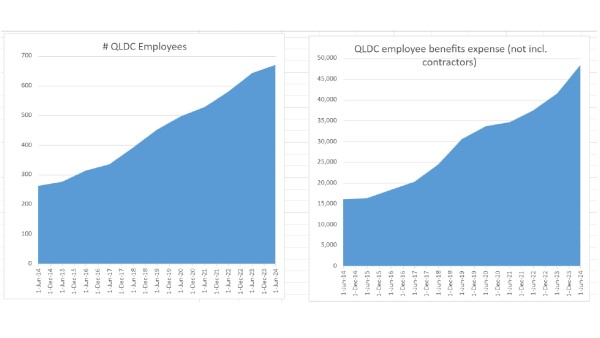
Crux has had no response from Lewers.
The council deadline was extended twice at their request to Thursday and then to Friday (today October 3).
The council was asked whether the more than doubling of council staff was warranted and about the discrepancy in growth of staff vs expenses.
In its written response, a QLDC spokesperson said the district was a high-growth area “consistently outpacing national averages for population”.
“The district from 2014 is very different 11 years on in 2025.
“QLDC is adequately resourced with the right capacity and capability to deliver the services that the community needs. We have a highly engaged and productive work culture. We always take a conservative approach to resourcing. Ultimately, we are responsible for ensuring that we are resourced adequately to deliver the services and outcomes we are committed to for the community.”
They referenced a Department of Internal Affairs Council performance measurement report released in July which compares rates revenue, debt, and operating and capital expenditure across council groups.
In the report, QLDC’s personnel costs and FTE staff numbers are below the group median of $55.8m and 641 staff.
“The high growth and lean resourcing are demonstrated through DIAs performance metrics,” the spokesperson said.
The council was also asked why contractor expenses had almost tripled since 2017 and if gross debt was still manageable for the council and acceptable for ratepayers.
“Significant growth in the district over the past 10 years combined with increased national compliance standards has shaped our infrastructure capital programme, requiring QLDC to engage specialist resource to address this. The use of contractors allows us to meet this need as well as the resulting increase in consents,” the spokesperson said.
“The large jump in debt is due to the weathertight claims. The LTP was built around balancing debt with infrastructure needs and ensuring that intergenerational assets are paid for over time (via debt). Population growth in our district means more homes and businesses, which in turn means more ratepayers and a decrease in the average debt per ratepayer.”
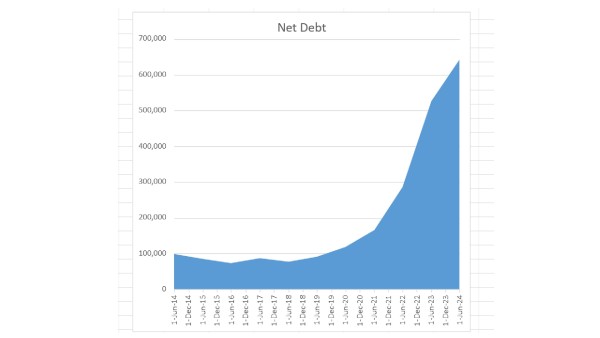
The council acknowledged there wasn’t a linear correlation between staff growth and expense growth – with staff numbers seeing a 9.9 per cent cumulative average growth rate and expenses growing at 11.7 per cent.
“Notable increases come from employee entitlements have grown over the 10 years to meet the requirements of Health, Safety and Wellbeing as a “Good Employer”. This includes growth in the learning and development expenditure given the need to fully understand the changing legislation the sector is subject to.”









